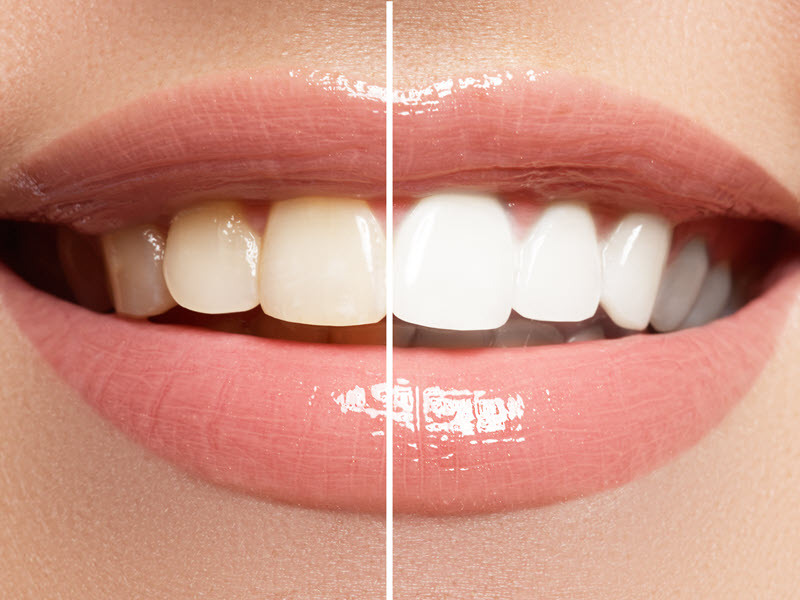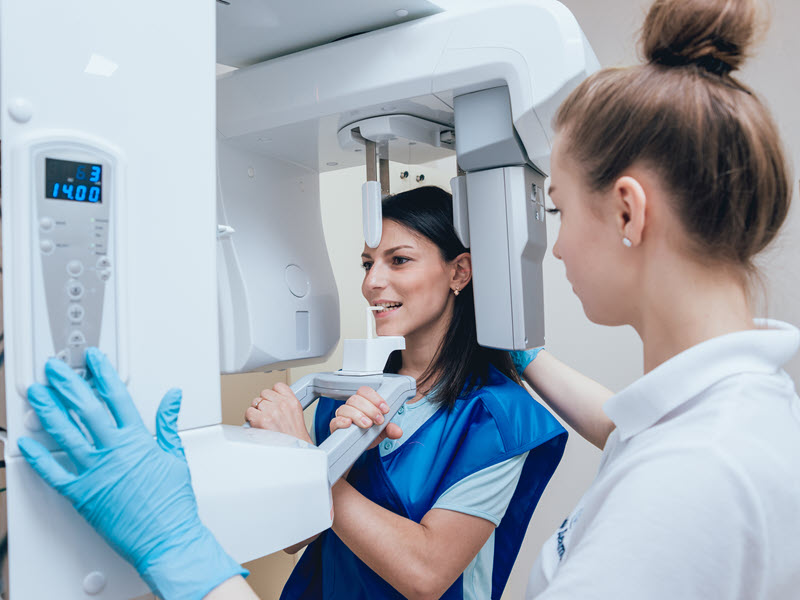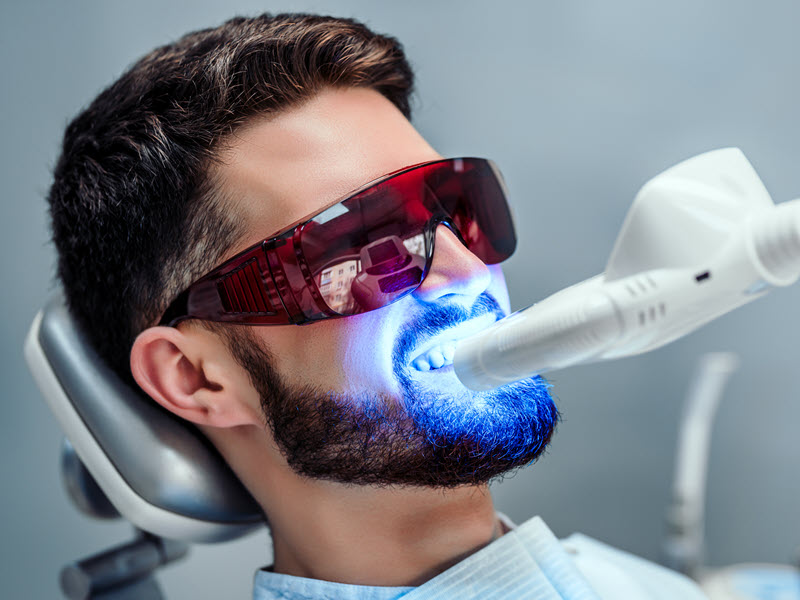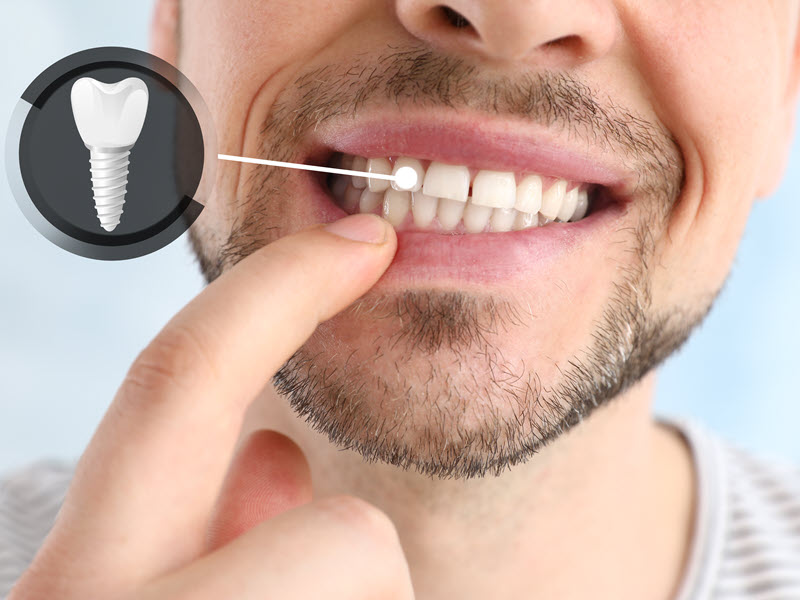What Is an Overbite
An overbite is a common dental condition where the upper front teeth overlap the lower teeth. It can affect your appearance and your dental health. Understanding the types of overbites and how they differ from other dental issues can help you identify any problems.
Overbite, Underbite, Normal Bite
Overbite
The technical term for an overbite is “malocclusion”. A malocclusion occurs when the upper teeth stick out too far over the lower teeth. This misalignment can range from mild to severe.
An overbite has some obvious aesthetic drawbacks, but an overbite presents more significant impacts to your overall oral health . People with an overbite may experience an abnormally deep bite, difficulty chewing, and abnormal wear on the teeth.
UnderBite
An underbite happens when the lower teeth extend beyond the upper teeth, unlike the overbite.
Normal Bite
With an ideal bite (or “normal bite”), the upper teeth slightly ahead of the lower ones. Issues arise when this overlap becomes excessive (“an overbite”) impacting how your teeth fit together when you close your mouth.
Types of Overbite
Overbites come in two main varieties: dental overbite and skeletal overbite
Dental Overbite – a dental overbite applies to teeth alignment issues. The overbite is caused by the theeth being incorrectly positioned due to teeth crowding or problems with your dental arches. Dental overbites can typically be remedied through the use of braces or clear aligners (like Ortho FX that we offer here at Murphy Dental).
Skeletal Overbite – A skeletal overbite is a more severe overbite and relates to your jaw structure. This occurs when your jawbones themselves are misaligned. Treatment options for skeletal overbites can be more complex and oftentimes involve surgery.
Causes of Overbite
An overbite often results from a combination of genetic and behavioral influences.
Genetic Factors
Genetics often play a key role in the development of a malocclusion. Not surprisingly, if your family has a history of small lower jaw structure, you might inherit this trait. A shorter lower jaw causes the upper teeth to protrude more, creating an overbite. This alignment issue is common in families. Some people inherit a larger upper jaw instead, leading to a similar outcome as having a small lower jaw.
Behavioral Influences
Genetics aren’t the sole cause of an overbite – behavioral habits can help to create an overbite as well. Thumb sucking and pacifier use are some common behaviors that can cause an overbite. These habits put pressure on the front teeth, pushing them forward over time.
If you’re a nail-biter, that can also have a negative impact on the alignment of your teeth and perhaps contribute towards an overbite. Nail biting constantly pressures teeth, gradually shifting their position.
Identifying Symptoms and Complications
Physical Symptoms
If you have an overbite, you might notice your upper teeth overlapping your lower ones. This teeth overlap is the most visible sign. It often results in your profile and smile look different.
Jaw pain is another common symptom. The improper alignment can strain your jaw muscles. This can lead to soreness or discomfort. Over time, this can also lead to frequent headaches or even earaches.
Speech problems can arise due to the positioning of your teeth. You may struggle with certain sounds or feel your speech is less clear.
Oral Health Consequences
Overbites can have serious effects on oral health. The constant friction of teeth might cause tooth erosion or wear. This increases the risk of tooth decay since worn enamel can’t protect teeth well.
Gum disease and gum recession can develop from improper biting patterns. Misaligned biting with pressure can cause many issues. Your teeth and gums strain and might not clean properly. This can lead to inflammation and infection risk.
Overbite complications might include temporomandibular joint dysfunction (TMD). Misaligned jaws can stress the joint, resulting in pain and limited movement. It’s crucial to address these issues promptly to avoid severe complications.
Effects on Well-being
Your confidence and well-being can suffer due to an overbite. Altered appearance due to noticeable teeth overlap might make you self-conscious. You may find yourself avoiding smiles or social interactions.
Assessment and Diagnosis
Diagnostic Procedures
For accurate diagnosis, specific procedures must be done. Your orthodontist or dentist may take X-rays to view your teeth alignment clearly. This imaging helps show any significant overlap of teeth.
During the examination, your doctor assesses your dental records. They examine how your teeth fit together. Sometimes, impressions of your bite are taken. These help create a model of your teeth structure.
These steps help diagnose the severity of an overbite. Accurate diagnosis leads to better treatment. Regular check-ups allow your dentist or orthodontist to monitor changes and adjust the treatment if needed.
Evaluating Severity
Evaluating how severe your overbite is involves measuring the overlap between your upper and lower teeth. An ideal overlap for a normal overbite is around 2-4mm. When significantly more than this, it indicates an overbite that needs attention.
Your healthcare professional will use specific tools to measure this overlap. They look at both vertical and horizontal dimensions. If needed, they may involve other specialists like oral surgeons to plan your care.
Clear assessment helps determine the best treatment options. It could involve braces, retainers, or other methods. With the right diagnosis, you can maintain better oral health and improve your dental structure over time.
Overbite Treatment Options
Overbites can cause jaw pain and tooth erosion. Treatments include braces, surgery, and newer, less invasive methods.
Braces
Braces are a common treatment option for overbite correction. Traditional braces use metal brackets and wires to slowly move teeth into place. They fix alignment by applying steady pressure over time. Clear braces are less noticeable and work in the same way.
Clear Aligner Solutions: Ortho FX
In addition to braces, the use of clear aligners can be highly effective at treating a slight overbite, or in some cases even excessive overbite.
At Murphy Dental, we offer OrthoFX to treat a variety of dental problems. OrthoFX is effective at treating many conditions including overbite, crowded teeth, underbite, and crossbites.
>>> Learn How OrthoFX Can Fix Your Overbite <<<
OrthoFX consists of removable trays that fit over your teeth. Wearing them for most of the day straightens teeth over time. These aligners need replacing every two weeks to keep making progress. Check out the video below to learn more about OrthoFX

OrthoFX NiTime is a convenient aligner that you wear at night to address dental issues – including overbites
Sometimes, a retainer is used to maintain results. Palate expanders or headgear can also assist in treatment for more complicated cases.

The American Dental Association Discussing how Clear Aligners / Invisible Braces Can be Used to Straighten Teeth
Surgical Interventions
Surgery may be necessary for severe overbites. Orthognathic surgery adjusts the jaw to correct alignment. The procedure aligns the jawbones, ensuring the upper and lower teeth meet properly.
This is a significant surgical procedure requiring a recovery period where the jaw needs to heal. This process might include using braces before and/or after surgery to fine-tune the teeth’s position.
Jaw surgery can greatly improve the function and appearance of your bite. It’s usually considered when non-surgical methods cannot correct the overbite alone.
Maintaining Results After Treatment
Keeping your teeth aligned after overbite correction needs continuous effort. Wearing retainers, caring for oral health, and avoiding harmful habits ensure sustainable results.
Post-Treatment Care
Once your orthodontic treatment ends, you often use a retainer. It keeps the teeth in their new positions. Retainers come in many types, including fixed and removable options. They stop your teeth from shifting.
A dentist or orthodontist will guide you on how often to wear your retainer. Usually, you start with full-time wear. Over time, the dentist may allow nighttime-only wear. Sticking to this schedule prevents relapse and protects your smile.
Addressing Associated Behaviors
Several habits can cause or worsen overbites. Teeth grinding or bruxism puts pressure on your teeth. A night guard might help reduce damage. Thumb-sucking and excessive nail biting in children challenge teeth alignment.
Identifying these habits early can prevent future issues. Your dentist or orthodontist might suggest solutions to break these habits. Focus on replacing harmful activities with safe alternatives. This approach protects your dental investment and enhances your oral health.
Risks of Not Treating an Overbite
An untreated overbite can lead to various dental and health complications. One of the primary risks is excessive wear on the front teeth, which can result in chipping, cracking, or even tooth loss due to the constant pressure exerted on these teeth. Additionally, the abnormal positioning of the teeth can cause gum disease and tooth decay, as it becomes harder to maintain proper oral hygiene.
Moreover, an untreated overbite can lead to significant jaw problems, including temporomandibular joint disorders (TMJ). TMJ disorders can cause severe headaches, jaw pain, and facial pain, which can affect daily activities such as chewing and speaking. The misalignment can also contribute to sleep apnea or other breathing issues, as the overbite may obstruct the airway during sleep.
In addition to physical health issues, an untreated overbite can impact one’s appearance and self-esteem. The disfigured appearance caused by the overbite can lead to psychological distress and social anxiety. Therefore, addressing an overbite is crucial not only for maintaining oral health but also for overall well-being.
Frequently Asked Questions
How can an overbite be corrected without surgery?
Only the most severe overbites require surgery. Treatments like braces or aligners can correct many overbites. These methods shift the misaligned teeth gradually into the right position. Treatment times vary from 6 months to 2 years, depending on severity.
What are the main factors leading to the development of an overbite?
Genetic factors often play a role in developing an overbite. Other factors include thumb sucking in childhood or prolonged use of pacifiers. Misaligned jaws may also contribute to overbites.
Are “Buck Teeth” also Known as an Overbite?
The term “buck teeth” is used by some to refer to a severe overbite. The good news is that there are a variety of treatment options for a severe case of deep overbite.
Can an overbite improve or worsen as a person ages?
Without intervention, a misaligned bite may stay the same or worsen over time. Habits or jaw changes as you age can influence the severity of an overbite. Seeking early treatment can prevent complications.















